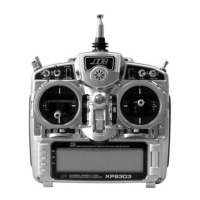Federal Aviation Administration
Daily Flight Checks
I2
1. Purpose
This advisory outlines safety standards for operations of
model aircraft. We encourage voluntary compliance with
these standards.
2. Background
Attention has been drawn to the increase in model
aircraft operation. There is a need for added caution when
operating free flight and radio controlled craft in order
to avoid creating a noise nuisance or a potential hazard
to full-scale aircraft and persons and/or property on the
surface.
3. Operating Standards
Modelers generally are concerned with safety and exercise
good judgment when flying model aircraft. However, in
the interest of safer skies, we encourage operators of
radio controlled and free flight models to comply with the
following standards:
a. Exercise vigilance in locating full-scale aircraft
(get help if possible) so as not to create a
collision hazard.
b. Select an operating site at sufficient distance
from populated areas so you do not create a
noise problem or a potential hazard.
c. Do not fly higher than 400 feet above the
surface.
d. Always operate more than three miles from the
boundary of an airport unless you are given
permission to be closer by the appropriate air
traffic control facility in the case of an airport for
which a control zone has been designated or by
the airport manager in the case of other airports.
e. Do not hesitate to ask for assistance in
complying with these guidelines at the airport
traffic control tower or air route traffic control
center nearest the site of your proposed
operation.
Information Provided By:
Director, Air Traffic Service Federal Aviation
Administration, Washington, D.C.
1. Check the battery voltage on both the transmitter and
the receiver battery packs. Do not fly below 9.0V on the
transmitter or below 4.7V on the receiver. To do so can
crash your aircraft.
Note: When you check these batteries, ensure that
you have the polarities correct on your expanded
scale voltmeter.
2. Check all hardware (linkages, screws, nuts, and bolts)
prior to each day’s flight. Be sure that binding does not
occur and that all parts are is properly secured.
3. Ensure that all surfaces are moving in the proper
manner.
4. Perform a ground range check before each day’s flying
session. The range check should be as follows:
• Do not extend the transmitter antenna at this time.
Turn the transmitter “on.”
• Turn the model “on.”
• Slowly walk away from the model while moving
the control surfaces. The aircraft should function
properly at a distance of 60–75 feet.
• For PCM Only: With the throttle fail safe preset to
idle, bring the throttle slightly above idle. Walk
away until the throttle drops to idle. This will be
the distance of the range check.
5. Prior to starting your aircraft, turn off your transmitter,
then turn it back on. Do this each time you start your
aircraft. If any critical switches are on without your
knowledge, the transmitter alarm will warn you at this
time.
6. Check that all trim levers are in the proper location.
7. All servo pigtails and switch harness plugs should
be secured in the receiver. Make sure that the switch
harness moves freely in both directions.

